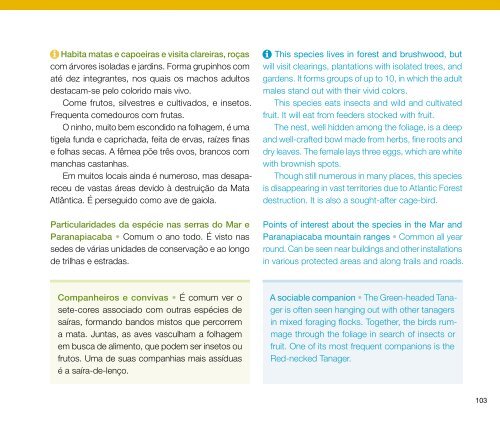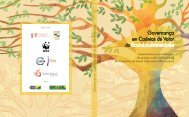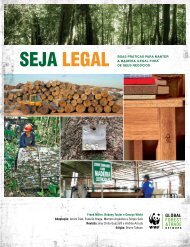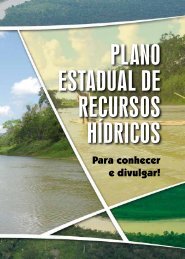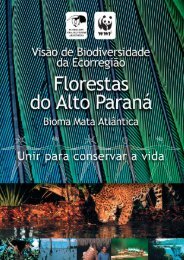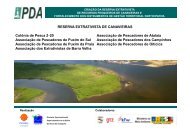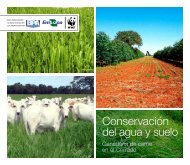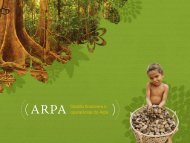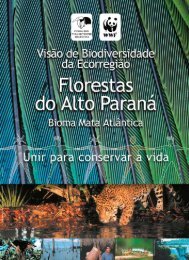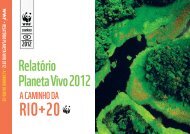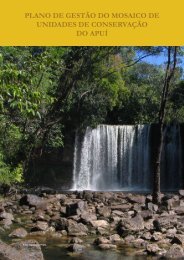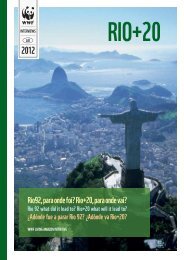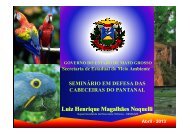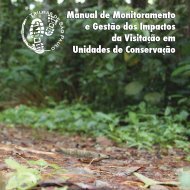Guia de aves Mata Atlântica Paulista
Guia de aves Mata Atlântica Paulista
Guia de aves Mata Atlântica Paulista
You also want an ePaper? Increase the reach of your titles
YUMPU automatically turns print PDFs into web optimized ePapers that Google loves.
Habita matas e capoeiras e visita clareiras, roças<br />
com árvores isoladas e jardins. Forma grupinhos com<br />
até <strong>de</strong>z integrantes, nos quais os machos adultos<br />
<strong>de</strong>stacam-se pelo colorido mais vivo.<br />
Come frutos, silvestres e cultivados, e insetos.<br />
Frequenta comedouros com frutas.<br />
O ninho, muito bem escondido na folhagem, é uma<br />
tigela funda e caprichada, feita <strong>de</strong> ervas, raízes finas<br />
e folhas secas. A fêmea põe três ovos, brancos com<br />
manchas castanhas.<br />
Em muitos locais ainda é numeroso, mas <strong>de</strong>sapareceu<br />
<strong>de</strong> vastas áreas <strong>de</strong>vido à <strong>de</strong>struição da <strong>Mata</strong><br />
Atlântica. É perseguido como ave <strong>de</strong> gaiola.<br />
Particularida<strong>de</strong>s da espécie nas serras do Mar e<br />
Pa ranapiacaba • Comum o ano todo. É visto nas<br />
se<strong>de</strong>s <strong>de</strong> várias unida<strong>de</strong>s <strong>de</strong> conservação e ao longo<br />
<strong>de</strong> trilhas e estradas.<br />
This species lives in forest and brushwood, but<br />
will visit clearings, plantations with isolated trees, and<br />
gar<strong>de</strong>ns. It forms groups of up to 10, in which the adult<br />
males stand out with their vivid colors.<br />
This species eats insects and wild and cultivated<br />
fruit. It will eat from fee<strong>de</strong>rs stocked with fruit.<br />
The nest, well hid<strong>de</strong>n among the foliage, is a <strong>de</strong>ep<br />
and well-crafted bowl ma<strong>de</strong> from herbs, fine roots and<br />
dry le<strong>aves</strong>. The female lays three eggs, which are white<br />
with brownish spots.<br />
Though still numerous in many places, this species<br />
is disappearing in vast territories due to Atlantic Forest<br />
<strong>de</strong>struction. It is also a sought-after cage-bird.<br />
Points of interest about the species in the Mar and<br />
Paranapiacaba mountain ranges • Common all year<br />
round. Can be seen near buildings and other installations<br />
in various protected areas and along trails and roads.<br />
Companheiros e convivas • É comum ver o<br />
sete-cores associado com outras espécies <strong>de</strong><br />
saíras, formando bandos mistos que percorrem<br />
a mata. Juntas, as <strong>aves</strong> vasculham a folhagem<br />
em busca <strong>de</strong> alimento, que po<strong>de</strong>m ser insetos ou<br />
frutos. Uma <strong>de</strong> suas companhias mais assíduas<br />
é a saíra-<strong>de</strong>-lenço.<br />
A sociable companion • The Green-hea<strong>de</strong>d Tanager<br />
is often seen hanging out with other tanagers<br />
in mixed foraging flocks. Together, the birds rummage<br />
through the foliage in search of insects or<br />
fruit. One of its most frequent companions is the<br />
Red-necked Tanager.<br />
103


